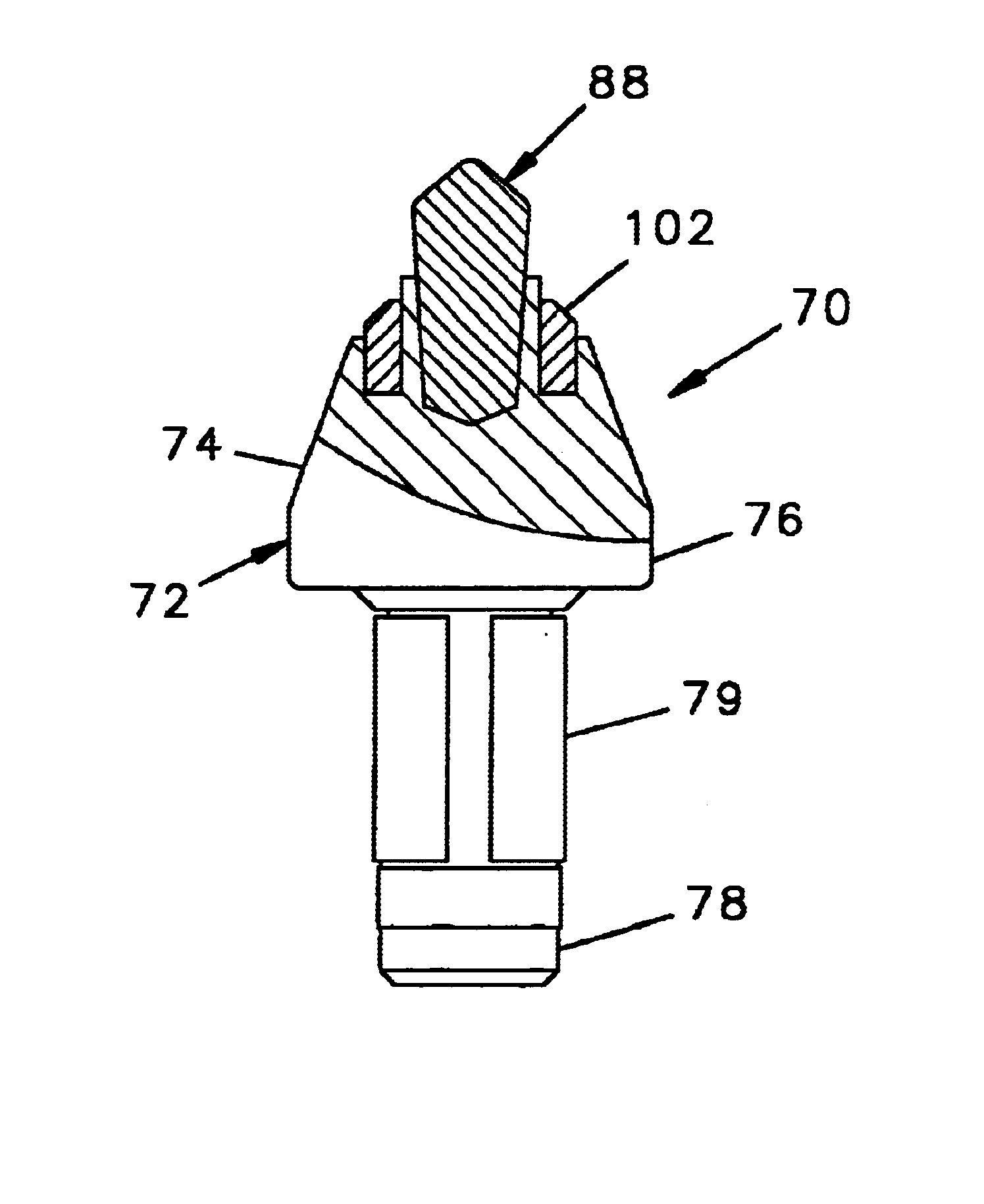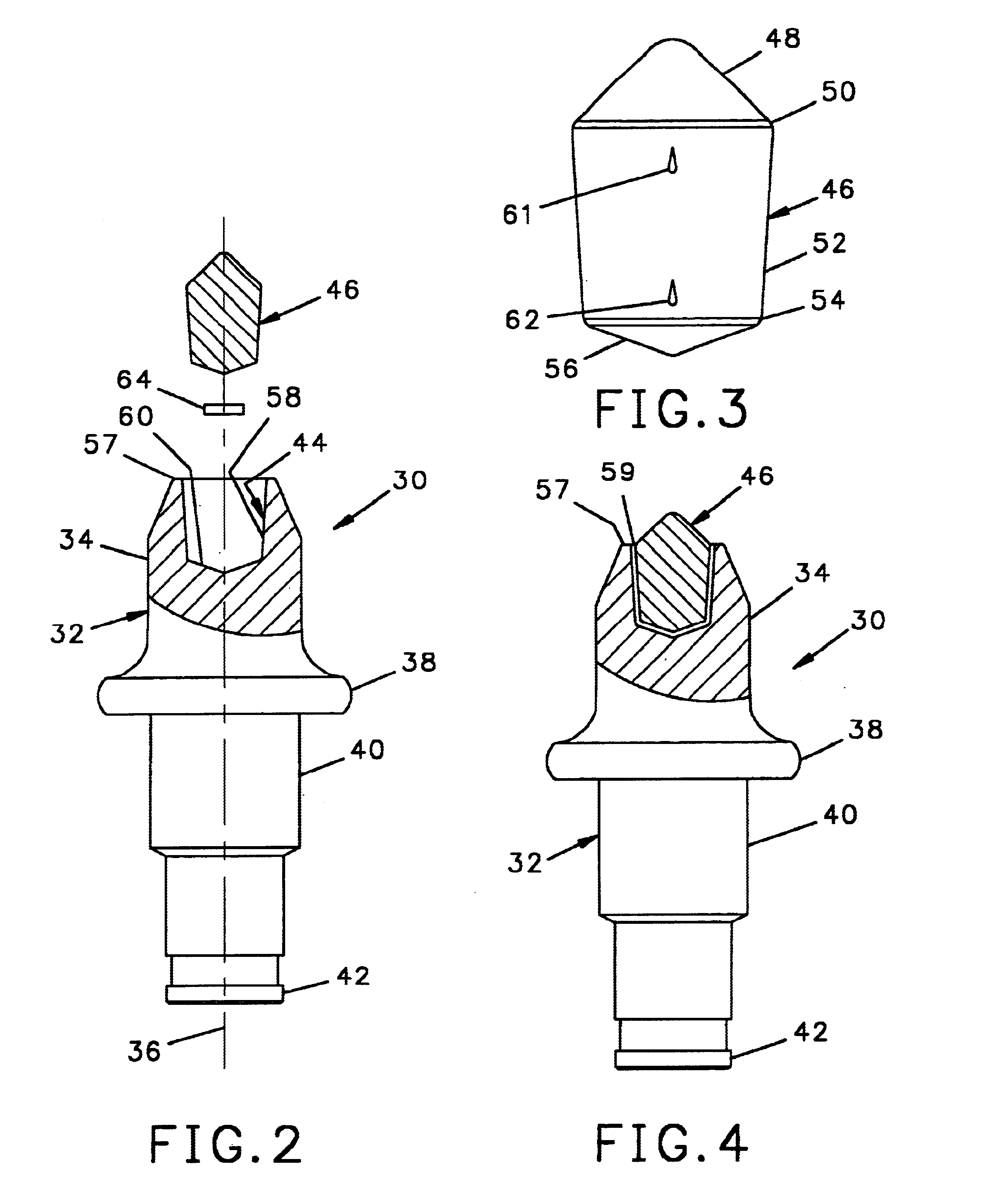Cutting tool with hardened tip having a tapered base
a cutting tool and tapered base technology, applied in the direction of cutting machines, manufacturing tools, slitting machines, etc., can solve the problems of reducing the quality of tungsten carbide of which the insert is made, the steel of the tool on the machine used to remove the upper surface of an asphalt highway can become so eroded, and the use of tools will be soon. , to achieve the effect of improving the quality of tungsten carbide, improving the brazing strength, and easy heating by induction heating
- Summary
- Abstract
- Description
- Claims
- Application Information
AI Technical Summary
Benefits of technology
Problems solved by technology
Method used
Image
Examples
Embodiment Construction
Referring to FIG. 1, a tool 10 in accordance with the prior art includes a tool body 12 having a seat 14 at the forward end thereof and an insert 16 brazed into the seat 14. The insert has a conical forward cutting end 18, a tapered midsection 20 and a generally cylindrical base 22 with a conical rear surface 24. The base 22 of the prior art insert 16 is fitted into the complementary shaped seat 14 which in turn has a cylindrical inner wall 26 complementary to the cylindrical base 22 and a bottom surface 28 complementary to the rear surface 24 of the insert 16 and is retained by braze material 29.
Referring to FIGS. 2, 3 and 4, a tool 30 in accordance with the present invention has a tool body 32 having a rotationally symmetric forward portion 34 defining an axis 36 and axially aligned behind the forward portion 34 is a radial flange 38. Axially behind the radial flange 38 is a cylindrical shank 40 having a hub 42 at the distal end thereof, the hub 42 having a diameter greater than t...
PUM
| Property | Measurement | Unit |
|---|---|---|
| distance | aaaaa | aaaaa |
| diameter | aaaaa | aaaaa |
| hard | aaaaa | aaaaa |
Abstract
Description
Claims
Application Information
 Login to View More
Login to View More - R&D
- Intellectual Property
- Life Sciences
- Materials
- Tech Scout
- Unparalleled Data Quality
- Higher Quality Content
- 60% Fewer Hallucinations
Browse by: Latest US Patents, China's latest patents, Technical Efficacy Thesaurus, Application Domain, Technology Topic, Popular Technical Reports.
© 2025 PatSnap. All rights reserved.Legal|Privacy policy|Modern Slavery Act Transparency Statement|Sitemap|About US| Contact US: help@patsnap.com



